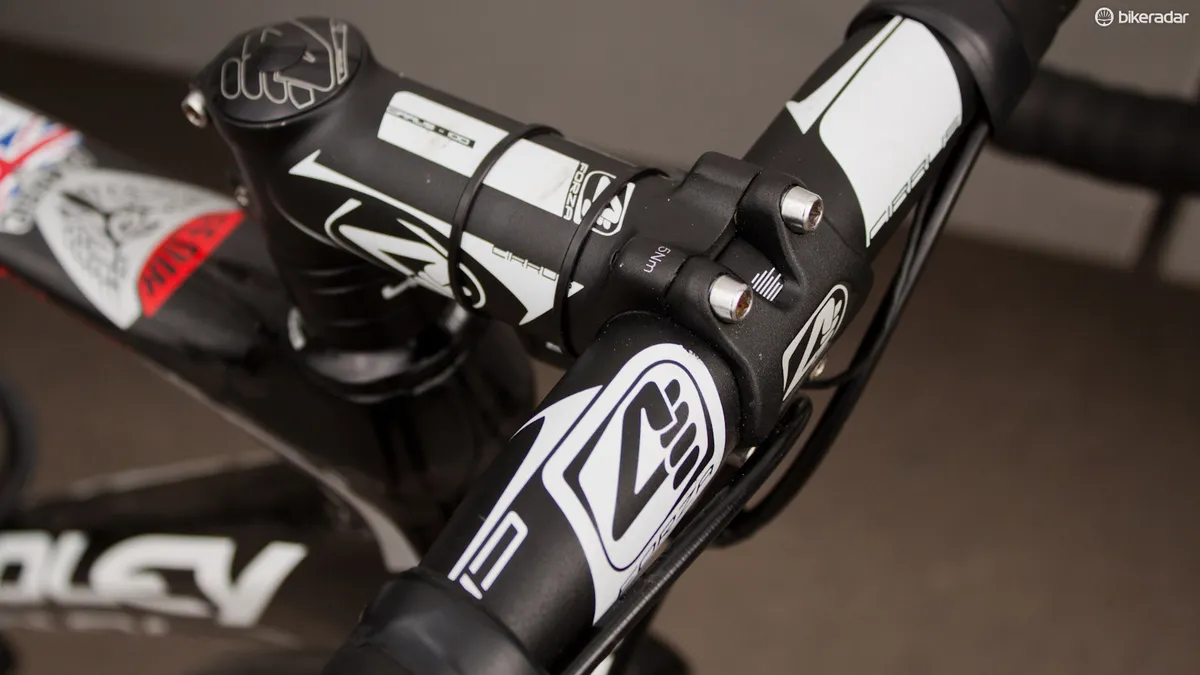Based in Flanders, Ridley launched as a bike brand in 1997 and has made a name for itself with an extensive range of cyclocross models, the aero Noah, and the lightweight Helium.
The Fenix Classic, as the name would suggest, is the company’s endurance model, the lovechild of its predecessors the Damocles and the Excalibur. We had the opportunity to ride one on the parcours of this year’s Liège-Bastogne-Liège, taking in just over 100km of Belgian roads including the Côte de Stockeu and Côte de La Redoute, among other climbs.
Frame and equipment: Strength a priority
The Fenix Classic has almost the exact same geometry as the Helium and sizing tends towards the large. Our Small test bike had a 545mm top tube and a 145mm head tube which would be equivalent to a Medium in many brands.
Unlike the Helium which is optimised for weight, Ridley emphasises strength in the design of the Fenix, making use of diamond tube profiles with reinforced sides that Ridley claims offers increased side impact protection, not something we tend to consider with carbon frames.
The 1 1/8in-1 1/4in tapered head tube, large down tube, asymmetric chainstays, and substantial PF30 bottom bracket form what Ridley calls the “stiffness zone” whilst the flattened seatstays and seat cluster are the “comfort zone”. It’s debatable how meaningful this distinction is but in any case, the sculpted tube profiles and the Fenix/pavé motif make for a visually striking bike.

The Fenix Classic is a good-looker
Rather than issuing us with a standard build, Ridley built our test Fenix with a full Campagnolo EPS electronic groupset (the frame is mechanical compatible) and Fulcrum Racing 5 wheels, a setup that would cost you something north of £4,500 / US$7,500 if you built it yourself. The 4ZA Cirrus cockpit, saddle and seatpost are the same kit you get on the retail versions of the bike.
Stock builds start with the Fenix Classic 30 and 40 at £1,825 / US$2,850 with Shimano 105 or Campagnolo Centaur, and range up to the Classic 10 at £2,740 / US$4,300 with Campagnolo Chorus. Our pick of the bunch would be the C20, which comes with Shimano Ultegra 6800 and Fulcrum Racing Quattro wheels for £2,465 / US$3,850. Alternatively, a frameset will set you back £1,280 / US$2,000.
Ride and handling: Sure-footed but not plush
On the road, the Fenix is stiff under power and inspires confidence on fast descents, staying firmly planted without a hint of skittishness. We enjoyed the multi-shift ability of the EPS groupset, although we found that the very tight clearance between the driveside spokes and the 11-speed Campagnolo cassette’s biggest sprocket meant we could get the rear derailleur cage to kiss the spokes when climbing out of the saddle. It’s not really a problem, and it’s partly setup-dependant, but it was mildly disconcerting.

Spoke clearance is tight with the 11-speed Campagnolo setup
Where the Fenix did surprise was in the firmness of its ride, and it’s this firmness that makes us question the categorisation of this bike as an endurance model. Granted, our test bike’s 23mm tyres probably didn’t help, but the clearances only allow for a maximum of 25mm according to Ridley, although we reckon you might squeeze a skinny 28mm in there.
In common with all stock models of Fenix, it also had a fat 31.6mm 4ZA aluminium seatpost, which seems a curious design choice for a bike meant for the cobbles. The Ridley is a fine race bike that heavier riders might appreciate, but we can’t help wondering how the same frame with a slimmer seat tube and a decent carbon post might feel.

The 31.6mm 4ZA metal seatpost is a curious choice















